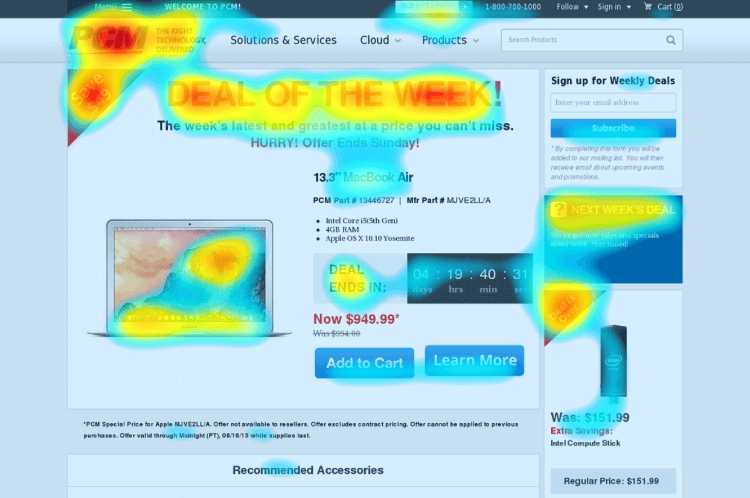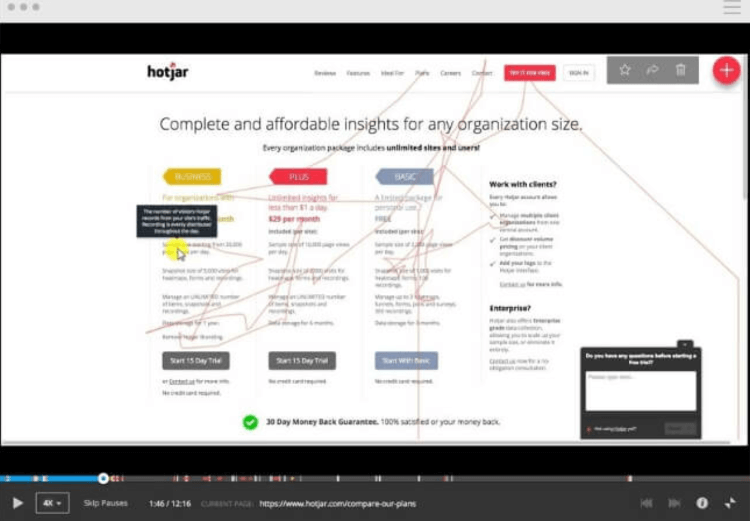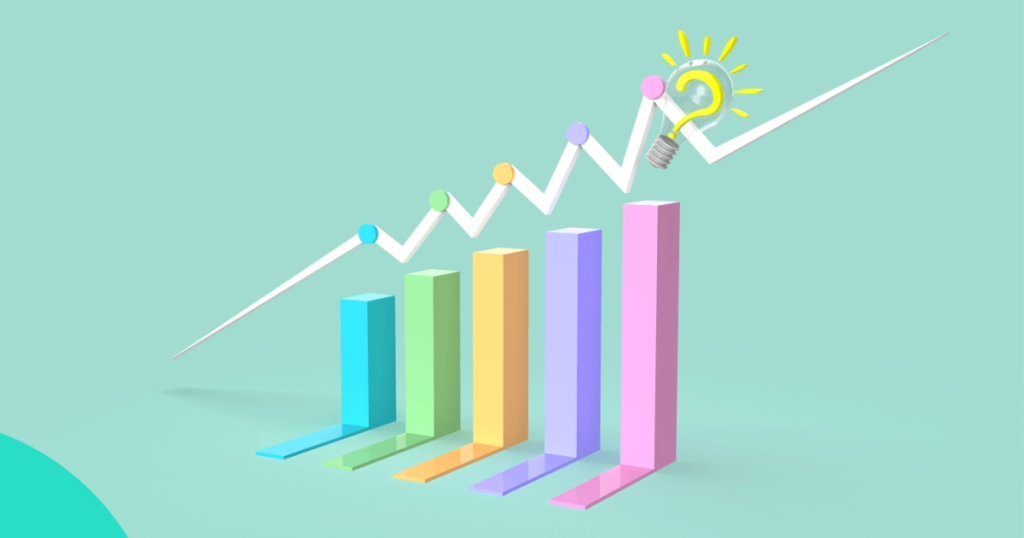One of the most challenging aspects of running an ecommerce business is turning your visitors into buyers. You may build a steady stream of visitors to your website, but purchases, signups, and other forms of revenue can still come in at a trickle.
Visitors might not convert – despite all the time and effort you've put into refining your shop’s marketing and conversion funnel. To improve your ecommerce conversion rate, funnel analysis can show you where people are abandoning it. Armed with that knowledge, you can form hypotheses regarding why people are dropping out and then start running experiments to plug up the holes.
Let’s begin with an understanding of what funnel analysis is.
What is Funnel Analysis?
Funnel analysis is when you trace the path taken by website visitors at different phases in the buyer’s journey that lead to a conversion – which might be a registration or a purchase, however you prefer to measure conversions.
Examining the user journey through a company's website is necessary to improve the site and analyze how many visitors end up in each step of the funnel. It is called a “website funnel” because, similar to a real funnel, it narrows toward the end. The number of visitors at the top is naturally larger than the number of visitors at the bottom.
Conversion rate is calculated by dividing the overall number of conversions by the total number of user visits in a given period. For instance, if you have 20 sales conversions from 1,000 interactions, your conversion rate is 2%.
But for people to reach the bottom of the funnel and ultimately convert, they need to trust and engage with you as they weigh their options during the consideration phases. With this in mind, let us check out why you should be conducting a thorough conversion funnel analysis for your ecommerce business.
Importance of Conversion Funnel Analysis
As an ecommerce company, you can study the movement and behavior of customers to get important insights and discover critical areas for development by doing a funnel analysis. Here are some of the major advantages of adopting conversion funnel analysis.
Identify and Fix Funnel Leaks
You may use funnel analysis to analyze performance and identify drop-offs. Getting the knowledge of what is working and what needs to be addressed as funnel analysis help identify potential bottlenecks. Pinpointing where your biggest funnel leaks are can be a great advantage, as it allows you to prioritize your conversion optimization experiments.
Conversion Rate Improvement
As an ecommerce business, you thrive on increasing conversion rates. You may make numerous tiny tweaks based on benchmarks and best practices. Still, real-time data using conversion analysis is a great way to uncover the most successful techniques to boost conversion rate.
Choose Best Practices for Checkout
Consumers' buying habits change depending on the kind of goods you have on offer. As a result, one of the finest methods for streamlining future judgments is to create your own set of best practices. You will save time, money, and resources if you follow proven methods for your homepage and product pages that help complete the checkout process.
How to Conduct a Funnel Analysis
A funnel analysis reveals the points at which consumers lose interest and ultimately abandon your site. Conducting a funnel analysis requires you to implement a few methods that help identify such dropout spots and understand what can influence your users.
Start using the website analytics solution of your choice to track your ecommerce customer journey. Make sure that you have access to data which speaks to user flows and key metrics contributing to their journeys. Such metrics also help understand what users do when they come on each of your website pages:
Identify whether visitors’ behavior on your homepage varies from that of your product pages.
Know which referring domains bring you the most traffic – and the most qualified, high buyer intent traffic.
Track how many interactions visitors from various segments have with a product page before making a purchase.
Important KPIs for Conversion Funnel
It is almost impossible to achieve desired results if you fail to keep track of your most important KPIs (key performance indicators). You need first to create attainable objectives and monitor their progress. During the funnel optimization process, it is critical to keep an eye on the following essential KPIs.
Conversion Rate
Think of offering the same deal for Christmas and New Year's Eve. You keep pushing it forward even though you have no idea whether your prospective buyers are interested in it or not. Likely, your sales won't move the needle. This is why keeping tabs on your conversion rates is essential to know what is working and what is not.
Bounce Rate
Bounce rate indicates the number of people leaving your ecommerce site after visiting only one page. This data will help you understand which stage of the funnel needs optimization. Reduce the bounce rate by providing CTA and creating page elements that allow visitors to navigate the next page.
Shopping Cart Abandonment Rate
If you see a high drop-off after adding products to the cart, there's likely an issue with the checkout process. Improve the checkout flow and attract your customers back with offers and discounts.
Mobile Site Traffic
Understand how your users are getting to know about your business. Know if your users are navigating your site for tablets, PCs, or mobile devices. If mobile, see if you are getting referrals from social media and make changes accordingly. You can leverage SEO to nail the first stage of the funnel, awareness. If you see high traffic from social media, put more effort into social media.
Ultimately, conversion funnels help you get a clearer understanding of the user behavior across your website. But you can supercharge the analysis by using funnels combined with other user experience tools.
Understand User Behavior
You can use heat maps and session recordings to get a more in-depth view of what visitors engage with immediately before they quit. This way, you can leverage the conversion funnel by identifying high-exit points and other bottlenecks.
Heat Maps
Heat maps help identify what parts of page users visited (and which ones were ignored) coupled with how far down the page visitors scrolled. This is an important tool that captures and aggregates user clicks, mouse movements, and scrolling.

Using a heat map may help you identify issues on high-exit sites such as broken links and unnoticed CTAs within your ecommerce website.
Session Recordings
Individual user sessions on your website may be rendered in session recordings. These are useful in supplementing the information you get using heat maps.

Use session recordings to know how visitors arrive at your high-exit pages, how they navigate through the content, and how they engage with the buttons before they leave your site. Such an approach helps you truly understand how the user's journey looks, providing some of the visual data required to create better UX and direct people farther down your site where they convert to a customer.
Identify Bottlenecks at Each Step of the Funnel
An ideal funnel analysis will help identify end-to-end drop-offs and bottlenecks. Each level of the ecommerce funnel should be examined for improvement if you want to create a healthy funnel.
Conducting an overall funnel analysis will reveal the most critical areas for improvement in the user experience.
The first step towards fixing any bottlenecks is knowing what works and what doesn’t. Know whether the user drops out at the product page, checkout page, or payment page. This way, you will learn from where the funnel leaks, putting you in a better position to know what improvement areas you need to prioritize.
Tips to Optimize Conversion Funnel
Begin creating a conversion funnel in your preferred analytics platform and visualize it. There is no ideal conversion funnel, but you can influence prospects and minimize dropouts. Here are some of the key tips to consider when optimizing the conversion funnel.
Make Your Site Easy to Navigate
Your website visitors should follow a logical route from beginning to end. It's important to make it easy for visitors to navigate the product page, no matter how they land on your site. The shopping basket should be prominently displayed on every product page.
People will leave your conversion funnel for various reasons, so eliminate those that you can manage.
Create Engaging Product Pages
You need to engage users with high-quality product photos, 360-degree spinning, in-context photography, and videos together with product suggestions, reviews, and user-generated content.
Follow these tips for your ecommerce photography, as maintaining high standards for compelling visuals is one of the proven ways to retain and captivate visitors' attention. Rich merchandising features may provide you with a substantial competitive edge in today's attention economy.
Optimize the Checkout Process
Data suggests that out of the top five reasons for cart abandonment, two are related to the checkout process. After excessive shipping charges, the two most common complaints are that there is no guest checkout option (28%) and that the checkout procedure is too slow and confusing (21%).
In such cases, improving your conversion rate may require you to create a quick and easy checkout process. Also, provide guest checkout options and incentivize users to create an account by providing a customized experience or discounts.
Wrapping Up
If you are looking to improve your ecommerce conversion funnel, it is best to know how your visitors are navigating the funnel. Use quantitative and qualitative analytics data to uncover the truth behind poor conversion rates and learn more about your clients' journeys.
It is always a good idea to better understand what visitors like and don't like about your site, including the obstacles they face in placing an order. Conversion funnel analysis is a time-consuming process that takes much planning and understanding.
But it does not have to be intimidating. You can follow the tips and ways mentioned above, and you'll be able to zero in on the most critical problems that need fixing for a better conversion rate.





